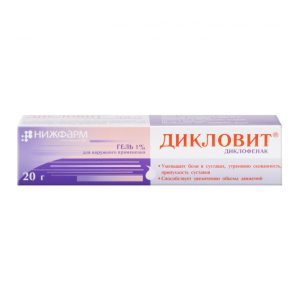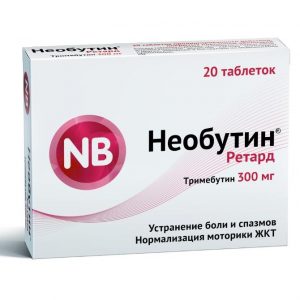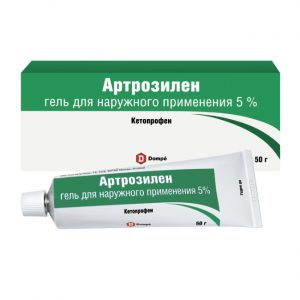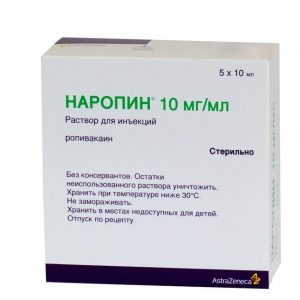Description
Release form
Injection.
Packaging
In 1 cartridge 1.7 ml injection. The package contains 100 cartridges.
Pharmacological action
Ultracain D-C – local anesthetic drug. The amide structure of articaine is similar to the structure of other local anesthetics, but its molecule contains one additional ether group, which is rapidly hydrolyzed by esterases in the human body.
Articaine blocks the sodium channels of the neuron membrane, which leads to a decrease in the conductivity of impulses along the nerve fiber, providing due to this local anesthetic effect.
Local anesthetics cause a reversible loss of sensitivity due to the termination or reduction of sensory nerve impulse conduction directly at and around the injection site. They have a membrane stabilizing effect due to a decrease in the permeability of nerve cell membranes for sodium ions.
Ultracaine DC does not contain epinephrine, it is used when the addition of epinephrine to a local anesthetic is optional or the use of epinephrine is contraindicated.
The action of the drug begins quickly (the latent period is 1-3 minutes).
Anesthesia lasts approximately 20 minutes. The rapid destruction of articaine to an inactive metabolite – articainic acid – is the reason for its very low systemic toxicity, which allows you to re-enter the drug.
Indications
Infiltration and conduction anesthesia (for surgical and diagnostic interventions, analgesia in obstetrics, treatment of pain syndromes).
Contraindications
Severe sinus impairment or severe conduction disturbances (such as severe bradycardia, grade II-III AV block),
acute decompensated heart failure,
severe arterial hypotension,
anemia (including 12-deficient anemia),
methemoglobinemia,
hypoxia,
children under 4 years of age (lack of clinical experience),
drug sensitivity hypersensitivity to other amide type local anesthetics, unless hypersensitivity to these drugs was ruled out by articaine allergy using appropriate studies, Eden with all the necessary rules and regulations.
With caution, the drug should be used in case of cholinesterase deficiency (used only in case of emergency, since a prolonged and excessively strong effect of the drug is possible).
Use during pregnancy and lactation
Articainum crosses the placental barrier.
Due to insufficient clinical data, the decision to prescribe a drug by a dentist can only be made if the potential benefits of its use justify the potential risk to the fetus.
During lactation, there is no need to interrupt breastfeeding, since no clinically significant concentrations of articaine are found in breast milk, however, as a precaution, breastfeeding should be interrupted for 4 hours after the last dose of articaine.
Special instructions
Influence on the ability to drive vehicles and operate machinery: the decision should be made by the physician when the patient can return to driving vehicles and engaging in potentially dangerous activities that require an increased concentration of attention and speed of psychomotor reactions.
An aspiration test should always be performed to avoid intravascular administration.
To prevent the introduction of infections (including viral hepatitis), it is necessary to ensure that new sterile syringes and needles are always used when taking the solution from the ampoules.
Open cartridges cannot be used again for other patients. Do not use a damaged cartridge for injection. Patients need to monitor the state of the cardiovascular system, respiratory system, central nervous system.
Eating is possible only after the termination of local anesthesia (restoration of sensitivity).
Composition of
1 ml injection contains: articaine hydrochloride 40.0 mg.
Excipients: sodium chloride 2.1 mg, water for injection – up to 1 ml.
Dosage and administration of
For adults: the maximum dose is 4-6 mg / kg body weight. The total dose is not more than 400 mg.
With infiltration anesthesia in the absence of inflammation, 1.7 ml of Ultracaine D
solution is usually administered per tooth or two adjacent teeth.
With conduction anesthesia of the lower alveolar nerve, approximately 1 1.7 ml of the drug solution is required.
Before administering the drug, it is always recommended that an aspiration test be performed to avoid inadvertent intravascular administration of the drug. Injection pressure during administration of the drug should be adjusted depending on tissue sensitivity.
The introduction of the drug into the inflamed areas of the mucous membrane is not recommended.
Side effects of the
From the nervous system: dose-dependent reactions – stupor, sometimes progressing to loss of consciousness. Respiratory disorders, sometimes progressing to respiratory arrest. Muscle tremor muscle twitches sometimes progressing to generalized cramps.
Possible – dizziness, paresthesia, hypesthesia, transient visual disturbances (blurred vision, blindness, double vision) that occur during or shortly after the injection of a local anesthetic into the head. Sometimes, in violation of the correct injection technique, when a local anesthetic is introduced in dental practice, nerve damage may occur, in particular, in such cases, damage to the facial nerve may occur, which can lead to the development of facial paralysis.
From the digestive system: nausea and vomiting.
From the cardiovascular system: lowering blood pressure, bradycardia, heart failure, shock.
Allergic reactions: hyperemia of the skin, conjunctivitis, rhinitis and angioedema. Angioedema can be manifested by swelling of the upper and / or lower lips, cheeks, swelling of the vocal cords with sensation of a lump in the throat and difficulty swallowing, urticaria, difficulty breathing.
Any of these manifestations may progress to anaphylactic shock.
Local reactions: swelling or inflammation of the mucous membrane at the injection site.
Drug Interactions
Negative Interactions: Use with MAO inhibitors increases the risk of lowering blood pressure, MAO inhibitors must be canceled 10 days before anesthetic administration. Opioid analgesics enhance the action of local anesthetics and increase the risk of respiratory depression. When injecting the drug into patients receiving heparin or acetylsalicylic acid, bleeding may occur at the injection site.
Interactions with drugs for the treatment of myasthenia gravis: Ultracain D exhibits antagonism with respect to the effects on skeletal muscles with drugs for the treatment of myasthenia gravis, therefore when it is used, especially in high doses, additional correction of the treatment of myasthenia is required.
Interactions that slow down the metabolism of other drugs: Ultracain D causes a slowdown in the metabolism of local anesthetics.
Interactions that enhance the effects of other drugs: the local anesthetic effect of articaine enhances and lengthens vasoconstrictor drugs. It enhances and lengthens the action of muscle relaxants. Local anesthetics enhance the effect of drugs that depress the central nervous system.
Overdose
Symptoms: The first manifestation of a toxic effect – dizziness, motor excitement or stupor. Possible bradycardia, a sharp decrease in blood pressure, respiratory disorders, muscle twitches, generalized convulsions, severe circulatory disorders, shock.
Treatment: At the first manifestation of the symptoms of toxic action during the administration of the drug, it should be stopped and the patient should be placed in a horizontal position with the lower limbs raised. Respiratory tract should be maintained and hemodynamic parameters (heart rate and blood pressure) monitored. It is always recommended, even if the symptoms of intoxication seem to be mild, to put in / in the catheter in order to be able to immediately carry out in / in the introduction of the necessary medicines.
In case of respiratory disorders, depending on their severity, oxygen supply is recommended, and in case of indications for artificial respiration – endotracheal intubation and artificial lung ventilation. The introduction of central action analeptics is contraindicated.
Muscle twitching and generalized seizures can be stopped in / in the introduction of short or ultra-short barbiturates. It is recommended to administer these drugs slowly, under constant medical supervision (risk of hemodynamic disorders and respiratory depression) and with simultaneous supply of oxygen and monitoring of hemodynamic parameters.
Often bradycardia or a sudden decrease in blood pressure can be eliminated by simply moving the patient horizontally with the lower limbs raised.
In severe circulatory disorders and shock, regardless of their cause, the drug should be discontinued and the patient should be moved to a horizontal position with the lower limbs raised. It is necessary to provide oxygen supply, in / in the introduction of solutions of electrolytes, glucocorticosteroids (250 – 1000 mg of methylprednisolone), if necessary, plasma substitutes, including albumin.
Slow in / into the introduction of epinephrine solution (0, 0025 – 0.1 mg) under the control of heart rate and blood pressure. If necessary, at doses exceeding 0.1 mg, epinephrine should be infused, adjusting the rate of administration under the control of heart rate and blood pressure.
Storage conditions
Do not store above 25 ° C.
Shelf life
30 months.
Terms and conditions
prescription
dosage form
injection
Possible product names
ULTRACAIN D 0.04 / ML 1.7ML N10 CATRIDGE R-D D / IN
ULTRACAIN D 0.04 / M 1.7ML N100 CATRIDGE RR D / IN
ULTRAKAIN D RR D / IN. 40MG / ML 1.7ML CARTRIDGES No. 100
ULTRACAIN DS 1.7ML N100 CATRIDGE RR D / IN
Ultracain DS Cartridges 1.7 ml, 100 pcs.
Sanofi-Aventis, France




